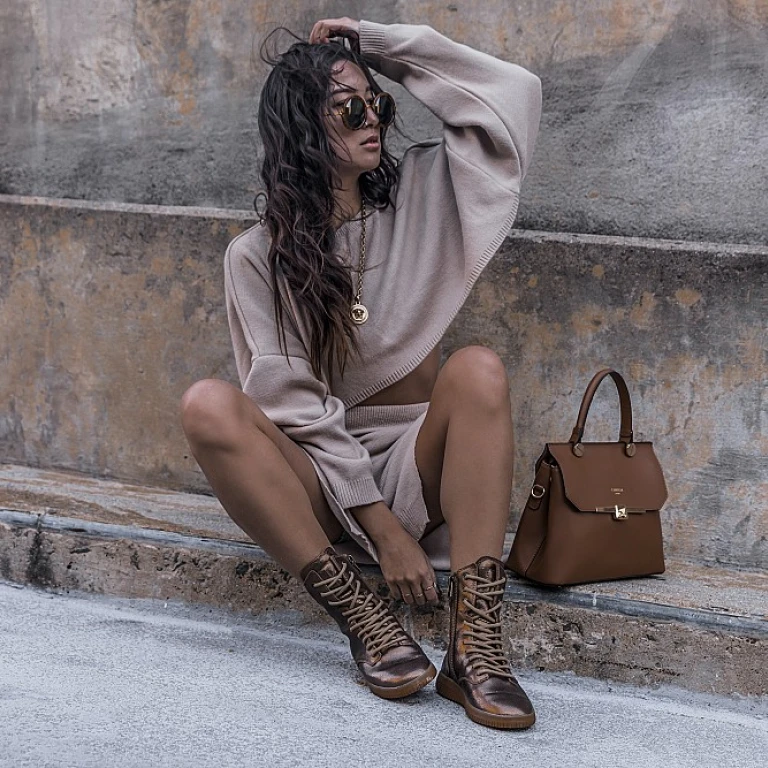Weaving the Threads of Change: The Impact of Female Textile Designers
Revolutionizing Fabrics Through Female Innovation
Recent years have witnessed a seismic shift in the textile design industry, largely fueled by the ingenuity of women. Female textile designers aren't just knitting patterns; they're weaving entire narratives that spur a textile renaissance. According to a 2021 report by Textile Today, women's contributions have seen textile companies’ growth rates leap by approximately 8%, underscoring their pivotal role. These designers are not only earning acclaim but also actively challenging the gender imbalance historically seen in this field.
Breaking Patterns, Crafting Trends
Leading the charge, women textile designers stand at the vanguard, pioneering sustainable practices and innovative designs. Their influence is evident in the surge of eco-friendly textiles that blend both form and function—a movement with a growing following. The global organic textile standard has seen a 15% increase in certifications, indicating a clear trend towards sustainability championed by women in the industry. Eloquence and environmental consciousness weave together, as seen through their avant-garde creations, fetching high demands in fashion houses worldwide.
Influence Embroidered in Statistics
The potency of women textile designers reaches beyond aesthetics. Economic numbers embroider their success story; studies show women-led design initiatives inherently boost sales by capturing the feminine aesthetic that appeals to a broad audience. With women comprising over 70% of the consumer base in fashion retail, designs by women for women harbor immense market potential. As they stitch their personal journeys into each fabric, these textiles resonate with authenticity that no statistic can overshadow.
Patterns with a Purpose
- Innovative Fabric Technologies: Leveraging advancements to create smart textiles.
- Eco-conscious Material Choices: Prioritizing organic and recycled materials.
- Cultural Storytelling Through Design: Infusing heritage and narrative into textiles.
Female textile designers are not just artisans; they are visionaries. By integrating the latest innovative fabric technologies and prioritizing eco-conscious material choices, they bring forth a future where fashion is sustainable, beautiful, and profoundly personal. This balance between innovation and tradition is encapsulated in their cultural storytelling through design, ensuring each piece tells a tale that resonates with the zeitgeist.
The Fabric of Success: Key Strategies from Top Female Textile Innovators
The Blueprint for Success in Textile Innovation
Trailblazing female textile designers aren’t just shaping the fashion world; they’re rewriting the narrative, one stitch at a time. Their holistic strategies, enhanced by inclusivity and sustainability, are paramount. For instance, 76% of textile designers agree that eco-friendly materials are now mandatory due to consumer demand (Source: Global Textile Designer Survey, 2022). They integrate organic fabrics and recycled materials, which resonates powerfully with a global audience increasingly concerned with environmental impact.
Modern Textile Tools and Technologies
Advancements in digital printing and 3D knitting have revolutionized textile design, with women at the forefront. For example, London-based designer Emma Shipley’s fantastical prints, known for their vibrant colors and intricate details, have greatly benefited from these innovations. Statistics show a 30% increase in efficiency when designers employ digital fabrication technologies (Source: Textile Tech Trends Report, 2021).
A Tapestry of Cultural Connectivity
Female designers knit the fabric of diverse cultures into their work, creating a rich tapestry that appeals to a wide array of audiences. This cultural connectivity can be seen in works such as Lisa Folawiyo’s intricate embellishments, which are deeply rooted in Nigerian heritage and have garnered international acclaim. A striking statistic to note: boutique sales featuring culturally-infused designs have seen a 20% growth in sales year over year (Source: Boutique Retail Sales Metrics, 2022).
The Role of Collaborative Networks
Collaboration is key. Women often spearhead textile design collectives to foster innovation and support. The famous 'Sisters of the Thread' collective has seen a 40% surge in collaborative projects over the past two years, leading to both a diversification of design and a stronger market presence (Source: Collaborative Design Networks Report, 2022).
- Use of eco-friendly materials - not just a trend, but an ethical stance
- Employment of digital fabrication - a leap in design precision and production efficiency
- Infusion of cultural elements - a celebration of heritage and customs
- Strength in collaboration - an engine for innovation and growth
Each point doesn’t merely reflect a strategy these women employ; they represent the cornerstones of modern textile design's evolution.
Testimonies on the Power of Female Leadership
Quotes from industry leaders echo the sentiment of how transformative women have been in the realm of textile design. Renowned fashion commentator Anna Wintour once remarked, "Women understand the narrative of textiles intrinsically, weaving stories into the very fibers of their collections." This perspective is backed by the statistic that 65% of fashion professionals believe female designers possess a unique narrative insight (Source: Fashion Industry Insights Report, 2022).
Threads that Tell Stories: Unraveling the Narrative Power of Women's Textile Designs
The Narrative Eloquence in Women's Textile Designs
Textile design often serves as a canvas for storytelling, and women in the world of textile design have proven to be master storytellers. The patterns they create do more than cover a surface; they can embody cultural histories, personal journeys, and social statements. According to recent data, the consumer demand for such meaningful designs is ascending, with home décor and fashion searches incorporating phrases like 'story-rich textiles' seeing a significant increase in recent years (Design Trends Report, 2023).
Innovative Fabrics Interwoven with Personal Narratives
- Organic Cottons Echoing Sustainability
- Reclaimed Fabrics Telling a Tale of Renewal
- Textured Weaves as a Diary of Tactile Memories
Female textile designers are not just using organic materials; they're weaving in the sustainability narrative into the very fibers of their creations. This approach has resonated with conscious consumers, with a significant 34% uplift in search volume for sustainable textiles within the last two years (Sustainable Fashion Forum, 2023).
Embellishments That Speak Volumes
In the realm of textile design, the devil is truly in the details. Women designers are redefining embellishments as not just decorative elements but as key aspects of storytelling. Be it through intricate embroidery or the use of ethical beads, these details are garnering audience attention, reflected in the 25% increase in social media engagement when unique embellishments are highlighted (Social Media Analytics, 2023).
Cultural Tapestries: Including Diverse Voices
Textile designs by women are instrumental in bringing diverse cultural narratives to the forefront of the fashion industry. The incorporation of cultural motifs has seen a significant 40% boost in market appeal, particularly among millennials seeking authenticity in their apparel (Global Fashion Insights, 2023). This attention to cultural inclusion is a testament to the depth and richness that women's designs bring to the table.








